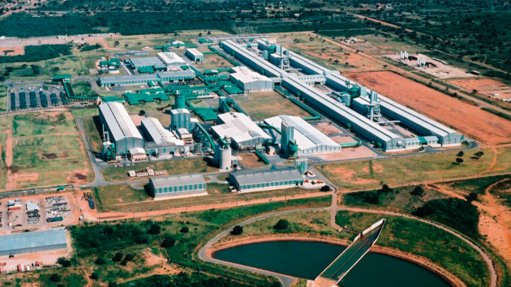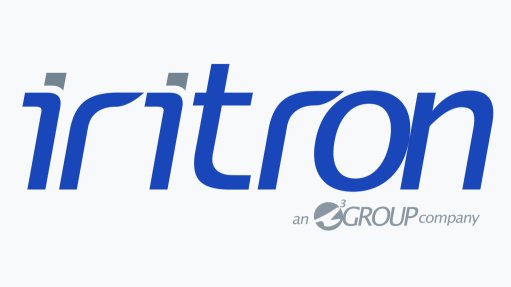Fuel cell technology in South Africa
We regularly hear of the concept of the ‘hydrogen economy’. Frequently, this is spoken of in rather vague terms of how hydrogen-burning cars and so on will emit no pollution. While much of the concept of a hydrogen economy is still a pipe dream, the viable application of hydrogen fuel cells is a real step in the direction of the dream.
An electric mine locomotive powered by a fuel cell was unveiled a while ago by Anglo American at a ceremony at one of its platinum mines in Rustenburg. This was a high-level affair, with the dignitaries present including Mineral Resources Minister Susan Shabangu. The unveiling was accompanied by much excitement.
So why the excitement? The answer is that South Africa sees fuel cell technology as a major technological area for the country to engage in on the world stage.
What is a fuel cell? In essence, it is an electrochemical device that produces elec- tricity – something like a battery. The difference between a fuel cell and a battery is that a battery provides electricity which has previously been stored in the battery, either by charging the battery with electricity or by assembling it using chemicals that react together to produce electricity until the chemicals are used up and the battery is flat.
In contrast, a fuel cell produces electricity all the time while a fuel is fed into the cell. There are various types of fuel cells but the primary one is the hydrogen fuel cell, where the fuels are hydrogen gas and oxygen gas. A description of fuel cell operation is provided below.
As long as hydrogen gas and oxygen are being fed into the fuel cell, it produces electricity. To simplify matters, the oxygen is usually just in the form of air, so one only needs to feed air and hydrogen into the fuel cell, and out comes a steady current of electricity.
A huge advantage of fuel cells is that the waste they produce is water only, which results from the combined hydrogen and oxygen, resulting in H2O. Fuel cells are safe, easy to use and produce no harmful waste products, so they are attractive to use in places such as underground mines. Another attraction for Anglo American is that a critical component of fuel cells is a platinum catalyst. Since South Africa hosts 87% of the world’s platinum, it stands to reason that we should be looking to export the platinum riches of the country.
To this end, the Department of Science and Technology has an initiative under way to encourage a spectrum of players to bring intellect and resources to bear on the challenge of developing a significant inter- national competence in the arena of fuel cell technology.
An overall project of this nature encourages not only industrialists to build and test devices such as the fuel-cell-powered underground locomotive, but it also encourages a spread of companies to embark on producing components and subassemblies for the fuel cells and for any fuel-cell-driven demands that may be developed as a spin-off. Of course, such a project also needs university research and development teams to play their part in studying the fundamental technology of fuel cells and how to develop final products locally.
Applications
A conventional battery-powered under- ground locomotive loses power towards the end of a shift, as the on-board battery runs flat. So, if the loco starts to perform below optimum, it can effect overall mine production. The fuel cell loco keeps running at full power.
Fuel cells are not new, but they have been receiving a lot more attention lately. Fuel cells were first developed over a century ago (see the history side bar). Currently, there are fuel cells ranging in size from ‘very small’, which can power a child’s toy, to those which can supply power to significant-sized industrial operations.
Fuel cells can be divided into three broad application categories: portable fuel cells, which can be used to provide electricity for something like a caravan; stationary units, which are placed at a fixed location; and transport fuel cells, which are designed to provide electricity on the move for vehicles such as mine locomotives.
Fuel cells not only have low, safe emissions but also exhibit exceptional efficiency and stability. They were first used in space on the Gemini spacecraft in the mid-1960s and also in the Apollo moon mission spacecraft. There, they not only supplied 1.5 kW of power but also provided drinking water for the astronauts.
By 2010, portable fuel cells accounted for 95% of world applications and 97% of the fuel cells sold worldwide used platinum catalyst technology.
Fuel
Gerhard van der Berg, group energy engineer at Anglo Platinum remarks: “Remember that a ‘fuel cell’ consists of two words: ‘fuel’ and ‘cell’.”
This is a very valid point, and is most important. The fuel cell itself is not a source of energy – it is a conversion device that converts the chemical energy of the hydrogen-oxygen reaction into electrical energy. Thus, the actual original source of the energy is the hydrogen.
It is all well and good to become excited about the potential of fuel cells but, unless one can bring a reliable supply of hydrogen to the fuel cell, it is not going to produce reliable electricity. What this emphasises is that a fuel cell is actually a comprehensive technology system. This notion then demands that strategic planning become an essential part of the fuel cell development project.
We have to determine where hydrogen will come from and how it will be trans- ported to the fuel cells.
Hydrogen is a highly reactive gas, so it does not tend to be found naturally in nature. Some hydrogen can be extracted from oil and gas wells and other places, but these are rather few and far between.
This reality then leaves us with the option of intentionally producing hydro- gen by some other method, such as the electrolysis of water, in which energy is used to split the H2O molecule of water into hydrogen and oxygen. Electricity is used to do this.
What this means is that electricity has to be used in one geographical location to extract hydrogen from water, and then the hydrogen has to be transported to another geographical location and be fed into the fuel cell to turn the hydrogen back into electricity and water.
That is fine; there is no problem with a system like that – as long as it is all shown to be economically viable.
Transport of Hydrogen
An immediate concern that springs to mind in the case of hydrogen as a fuel is how to transport it. People have an idea of road tankers or gas cylinders carrying the flammable gas under high pressure, which conjures up all sorts of health and safety concerns. Luckily, there is another way and that is by means of metal hydrides. Metal hydrides are solids, and most metal hydrides bind with hydrogen very strongly. The hydrogen is then released by heating the metal hydride up to temperatures of between 100 ºC to 200 ºC. Hydrides containing hydrogen are kept in a normal tank and no high pressure storage is required.
Innovation Challenge
What we now face with the South African fuel cell initiative is the challenge of find- ing fuel cell technology configurations and sources of fuel which, together, result in a viable technology solution for some application.
There must be many. Here in Africa, we face different challenges to Europe and other First World countries, so we have to examine our needs and circumstances as well as theirs and come up with innovative solutions. In fact, since we want to become primary fuel cell suppliers to the world, we need to examine all types of countries and con- ceive of potential fuel cell systems that can also be applicable in their specific circumstances.
One has to examine the fuel cell system characteristics and compare them with alternative technologies, such as diesel generators and rechargeable batteries. One then has to produce system models; for example, of how a fuel cell locomotive would operate underground, compared with a diesel locomotive. One has to carefully compare the entire system, which includes factors like how one transports diesel underground and how one transports hydrogen. Factors like the load that diesel emissions place on air-conditioning systems then need to be considered. All this has to be examined in parallel to other activities like university academics and research institutes continuing to work on the actual physics and chemistry of developing and constructing the fuel cells themselves.
The general innovation challenge is, therefore, exciting in that there are many potential solutions waiting to be developed using a variety of multiple inputs, and this all involves the cooperation of multi- disciplinary teams.
Article Enquiry
Email Article
Save Article
Feedback
To advertise email advertising@creamermedia.co.za or click here
Comments
Press Office
Announcements
What's On
Subscribe to improve your user experience...
Option 1 (equivalent of R125 a month):
Receive a weekly copy of Creamer Media's Engineering News & Mining Weekly magazine
(print copy for those in South Africa and e-magazine for those outside of South Africa)
Receive daily email newsletters
Access to full search results
Access archive of magazine back copies
Access to Projects in Progress
Access to ONE Research Report of your choice in PDF format
Option 2 (equivalent of R375 a month):
All benefits from Option 1
PLUS
Access to Creamer Media's Research Channel Africa for ALL Research Reports, in PDF format, on various industrial and mining sectors
including Electricity; Water; Energy Transition; Hydrogen; Roads, Rail and Ports; Coal; Gold; Platinum; Battery Metals; etc.
Already a subscriber?
Forgotten your password?
Receive weekly copy of Creamer Media's Engineering News & Mining Weekly magazine (print copy for those in South Africa and e-magazine for those outside of South Africa)
➕
Recieve daily email newsletters
➕
Access to full search results
➕
Access archive of magazine back copies
➕
Access to Projects in Progress
➕
Access to ONE Research Report of your choice in PDF format
RESEARCH CHANNEL AFRICA
R4500 (equivalent of R375 a month)
SUBSCRIBEAll benefits from Option 1
➕
Access to Creamer Media's Research Channel Africa for ALL Research Reports on various industrial and mining sectors, in PDF format, including on:
Electricity
➕
Water
➕
Energy Transition
➕
Hydrogen
➕
Roads, Rail and Ports
➕
Coal
➕
Gold
➕
Platinum
➕
Battery Metals
➕
etc.
Receive all benefits from Option 1 or Option 2 delivered to numerous people at your company
➕
Multiple User names and Passwords for simultaneous log-ins
➕
Intranet integration access to all in your organisation


















